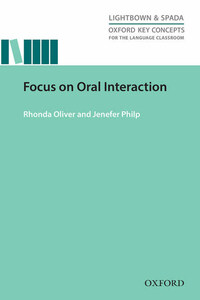Great Clarendon Street, Oxford, OX2 6DP, United Kingdom
Oxford University Press is a department of the University of Oxford. It furthers the University’s objective of excellence in research, scholarship, and education by publishing worldwide. Oxford is a registered trade mark of Oxford University Press in the UK and in certain other countries
© Oxford University Press 2014
The moral rights of the author have been asserted
First published in 2014
2018 2017 2016 2015 2014
10 9 8 7 6 5 4 3 2 1
All rights reserved. No part of this publication may be reproduced, stored in a retrieval system, or transmitted, in any form or by any means, without the prior permission in writing of Oxford University Press, or as expressly permitted by law, by licence or under terms agreed with the appropriate reprographics rights organization. Enquiries concerning reproduction outside the scope of the above should be sent to the ELT Rights Department, Oxford University Press, at the address above You must not circulate this work in any other form and you must impose this same condition on any acquirer Links to third party websites are provided by Oxford in good faith and for information only. Oxford disclaims any responsibility for the materials contained in any third party website referenced in this work
Photocopying
The Publisher grants permission for the photocopying of those pages marked ‘photocopiable’ according to the following conditions. Individual purchasers may make copies for their own use or for use by classes that they teach. School purchasers may make copies for use by staff and students, but this permission does not extend to additional schools or branches
Under no circumstances may any part of this book be photocopied for resale
ISBN: 978 0 19 400084 0
Printed in China
This book is printed on paper from certified and well-managed sources
ACKNOWLEDGEMENTS
The authors and publisher are grateful to those who have given permission to reproduce the following extracts and adaptations of copyright material: pp.5, 15, 22, 52 Extracts from ‘When the gate opens: the interaction between social and linguistic goals in child second language development’ by J. Philp & S. A. Duchesne from Second Language Acquisition and the Younger Learner: Child’s Play? edited by J. Philp, R. Oliver & A. Mackey. John Benjamins Publishing Company, 2008. Reproduced by kind permission of John Benjamins Publishing Company, Amsterdam/Philadelphia, www.benjamins.com. p.11 Extract from ‘Task Familiarity and Interactional Feedback in Child ESL Classrooms’ by A. Mackey, A. Kanganas & R. Oliver, TESOL Quarterly Vol. 41 Iss. 2, 2007. © TESOL International Association. Reproduced by permission of John Wiley and Sons, Inc. p.13 Extracts from ‘The Patterns of Negotiation for Meaning in Child Interactions’ by R. Oliver, The Modern Language Journal Vol. 86 Iss. 1, 2002. © Blackwell Publishers Ltd 2002. Reproduced by permission of John Wiley and Sons, Inc. pp.14, 96, 98 Extracts from Making Language and Learning Work 2: Integrating language and learning in Secondary English and Social Sciences by Ministry of Education, New Zealand, 2008. Reproduced by permission of Learning Media Limited. p.17 Extract from ‘L1 use in primary and secondary foreign language classrooms and its contribution to learning’ by Rita Tognini & Rhonda Oliver from Discourse and language learning across L2 instructional settings. Utrecht Studies in Language & Communication Vol. 24, 2012. Reproduced by permission of Editions Rodopi B.V. pp.21, 28 Extracts from ‘Teaching Content, Learning Language: Socialising ESL Students into Classroom Practices in Australia’ by R. Oliver & J. McLellan in Creating Classroom Communities of Learning International Case Studies and Perspectives edited by R. Barnard & M. E. Torres-Guzmán. Published by Multilingual Matters, 2009. Reproduced by permission of Multilingual Matters. pp.30, 38–39, 49, 104, 107, 109–10 Extracts from ‘Interaction in languages other than English classes in Western Australia primary and secondary schools: Theory, practice and perceptions’ by Rita Tognini, 2008. Reproduced by permission of Rita Tognini. p.44 Extract from Learning to Learn in a Second Language by Pauline Gibbons, Primary English Teaching Association Australia (PETAA), Sydney, pp.27–8. Reproduced with permission from PETAA – Primary English Teaching Association Australia. p.45 Extract from ‘Age Differences in Negotiation and Feedback in Classroom and Pairwork’ by Rhonda Oliver, Language Learning Vol. 50 Iss. 1, 2000. © Language Learning Reasearch Club, University of Michigan. Reproduced by permission of John Wiley and Sons, Inc. pp.46, 71–2, 74 Extracts from Bridging Discourses in the ESL Classroom: Students, Teachers and Researchers by Pauline Gibbons. Published by Continuum, 2006. © Pauline Gibbons 2006. Reproduced by permission of Bloomsbury Publishing Plc. p.50 Extract from Audible Difference ESL and Social Identities in Schools by Jennifer Miller. Published by Multilingual Matters Ltd, 2003. © Jennifer Miller 2003. Reproduced by permission of Multilingual Matters. p.74 Extract from ‘Home–school connections for international adoptees: Repetition in parent–child interactions’ by Lyn Wright Fogle from








